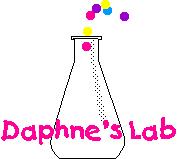| PHARAOHS OF THE SEA |
print me! |
Coral
The Coral Polyp
lives inside a circular stone house called a corallite. The outer
skin of the polyp has special cells that take calcium carbonate from
the sea water and deposit it as a hard cup around the body of the
polyp. This solid limestone cup cements the polyp to the reef. By
day the poly curls up inside the limestone shelter. By night it stretches
up out of the corallite and spreads it's tentacles to capture zooplankton
food that comes it's way.
Even
though the coral polyps hide in day and come out at night to feed
in the darkness, sunlight is important to them. That is because they
house many microscopic plant guests called zooxanthellae (zoh-uh-zan-THEL-ee).
The partnership between coral polyps and zooxanthellae is complex.
Marine biologists are still trying to understand it. But most marine
scientists agree that Coral polyps could not build a coral reef with
out these plant companions. The zooxanthellae speed up the process
by which coral polyps can remove calcium carbonate from the seawater.
Like all plants zooxanthellae use the energy from the sun to change
water and carbon dioxide into oxygen, sugars and starches. This process
is called photosynthesis. The zooxanthellae uses the waste from the
polyp - carbon dioxide and nitrates - to help them grow. In return
the plants supply food and oxygen to the polyp. The polyp also eats
tiny animals called nematocysts it spears with it's stinging tentacles. |


